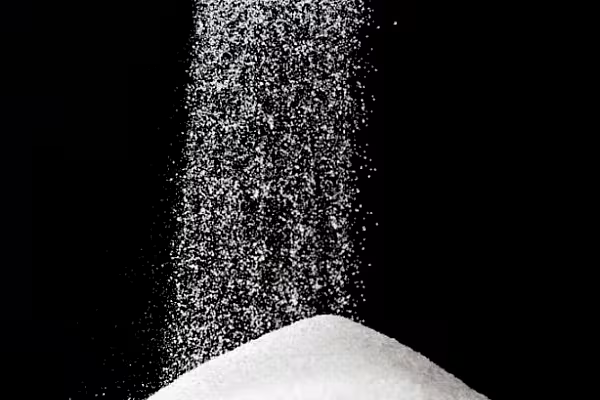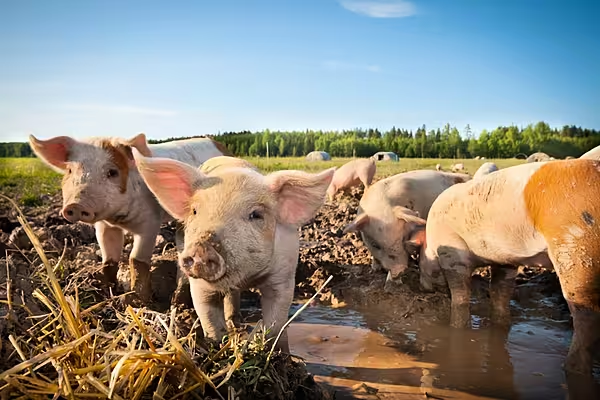Satisfying the sweet tooth of the world’s biggest sugar-consuming country is getting a lot more expensive.
At a time when demand in India is the highest ever, domestic output will drop for the fourth year in five, creating the first deficit since 2010 as prices surge. SGS SA, a researcher hired by Bloomberg to survey farmers in top cane-growing regions, said reduced planting because of drought means production will fall 8.4% to 23 million metric tonnes in the year that began October 1st.
The smallest Indian crop since 2010 means the country will have to import supply, eroding global inventories that were the largest ever last year. After several smaller harvests in Brazil, the top grower and exporter, world output has failed to keep pace with record demand. Sugar futures in New York touched a four-year high in September, while Indian retail prices in September were 26% higher than a year earlier.
“India’s consumption is high relative to supplies,” which are tightening as output drops, said Donald Selkin the New York-based chief market strategist at National Securities Corp. who helps manage about $3 billion. “You can see that sugar market is inverted, and that’s a pretty bullish sign.”
The global benchmark contract on ICE Futures U.S. in New York has surged 47% in the past year to 21.65 cents a pound on Wednesday. Prices could climb as high as 24 cents, Selkin said. Sugar futures in Mumbai are up 28% in the past year to 3,376 rupees ($51) per 100 kilograms. That’s helped to boost the share of producers including Balrampur Chini Mills Ltd. and Dhampur Sugar Mills Ltd.
India’s growers are dependent upon annual monsoons. The four-month rainy season affects sowing of both summer and winter crops and directly waters more than half of all farmland. Rainfall was 14% below a 50-year average in 2015, following a 12% shortfall in 2014, data from the meteorological department show.
Fewer Acres
The prolonged moisture deficit led farmers to reduce the amount of land used to grow sugar cane by 5.1%, according to SGS, which surveyed 869 farmers between September 24th and October 18th across six states, including top producers Uttar Pradesh and Maharashtra.
“Previous dry years caused a drop in acreage,” Mark Oulton, global agricultural market research manager with SGS, said by phone.
Planting declined in Maharashtra, Karnataka and Gujarat, while farmers increased area in Uttar Pradesh, Tamil Nadu and Andhra Pradesh, SGS said. Fewer acres were offset in part by a 2% increase in national yields, Oulton said. About 9% of crops were in bad condition, up from 5.5%in the 2015-16 survey, though farmers reported 30% in good condition, up from 20% a year earlier, according to the report.
Smaller Harvest
As a result, cane production will decline 3.2% to 340.85 million tonnes this season, according to SGS. About 66% of the crop will be crushed to make sugar. The rest will be used for livestock feed, seeding and jaggery, a local sweetener.
The harvest will shrink in Maharashtra, Tamil Nadu, and Karnataka. Output will increase 12.7% in Uttar Pradesh.
The SGS production estimate is in line with the Indian Sugar Mills Association, which pegged sugar output this season at 23.4 million tonnes this season, trailing domestic demand at 25.5 million tonnes. The U.S. Department of Agriculture predicts consumption will rise for a seventh straight year to an all-time high.
Improved Outlook
Conditions are showing some signs of improvement, and with higher prices and good weather, farmers may expand the area sown for the 2017-2018 season, SGS’s Oulton said.
While this year’s monsoon missed a forecast for above-normal showers, rainfall was 97% of the 50-year average of 89 centimetres between June and September, a level considered normal, according to the Indian Meteorological Department.
“Good rains this year will definitely boost planting for 2017-18,” Sanjeev Babar, managing director of Maharashtra State Cooperative Sugar Factories Federation, said by telephone from Mumbai on Tuesday.
News by Bloomberg, edited by ESM. To subscribe to ESM: The European Supermarket Magazine, click here.














